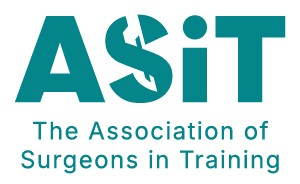Continuing surgical education
As surgical science advances at an extraordinary rate, all surgeons have a duty to keep up to date to offer their patients treatment based on the latest research.
To support the professional development of general surgeons of all specialties, Continuing surgical education provides a wealth of formal digital courses, specialty digests and much more.
A myriad of skills and qualities are required to sustain a career in this field, including personal sacrifice, dedication and resilience. In this section, surgeons can access a series of publications exploring this important topic.
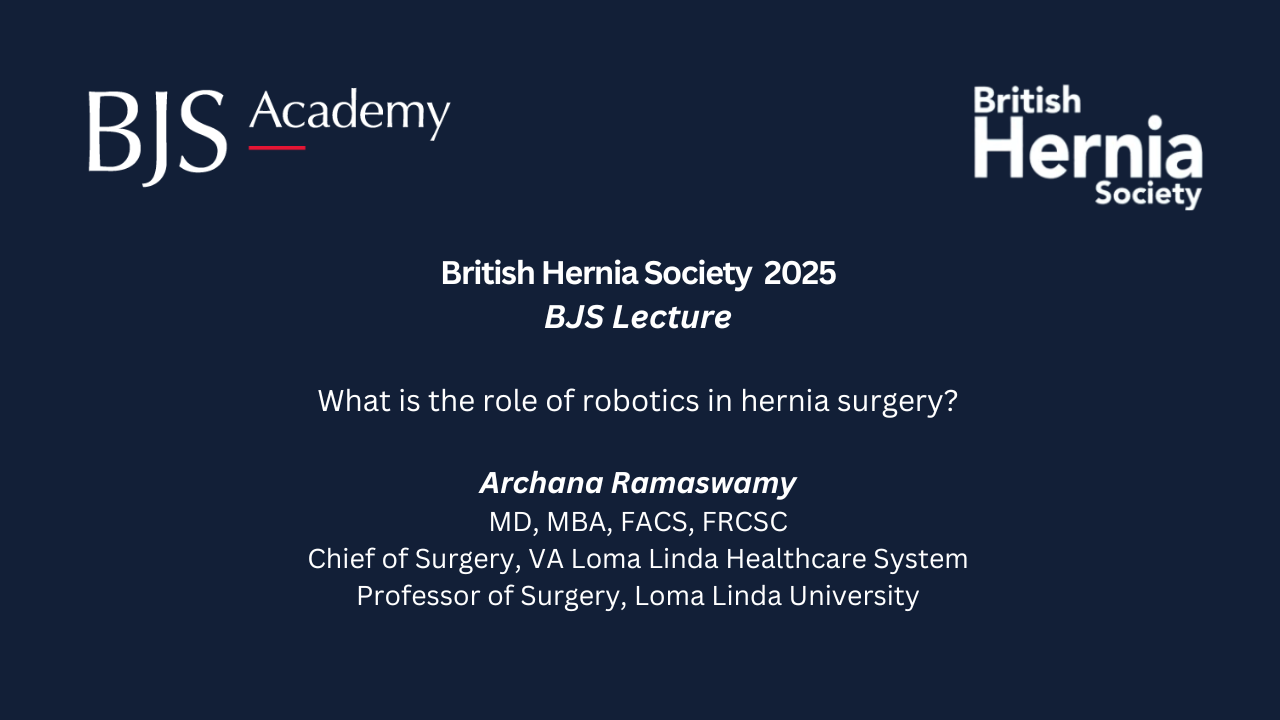
2025 British Hernia Society BJS Lecture: What is the role of robotics in hernia surgery?
Archana Ramaswamy presents her British Hernia Society (BHS) BJS Lecture: "What is the role of robotics in hernia surgery?" from the BHS virtual workshop "Hernia Fundamentals: A-Z".
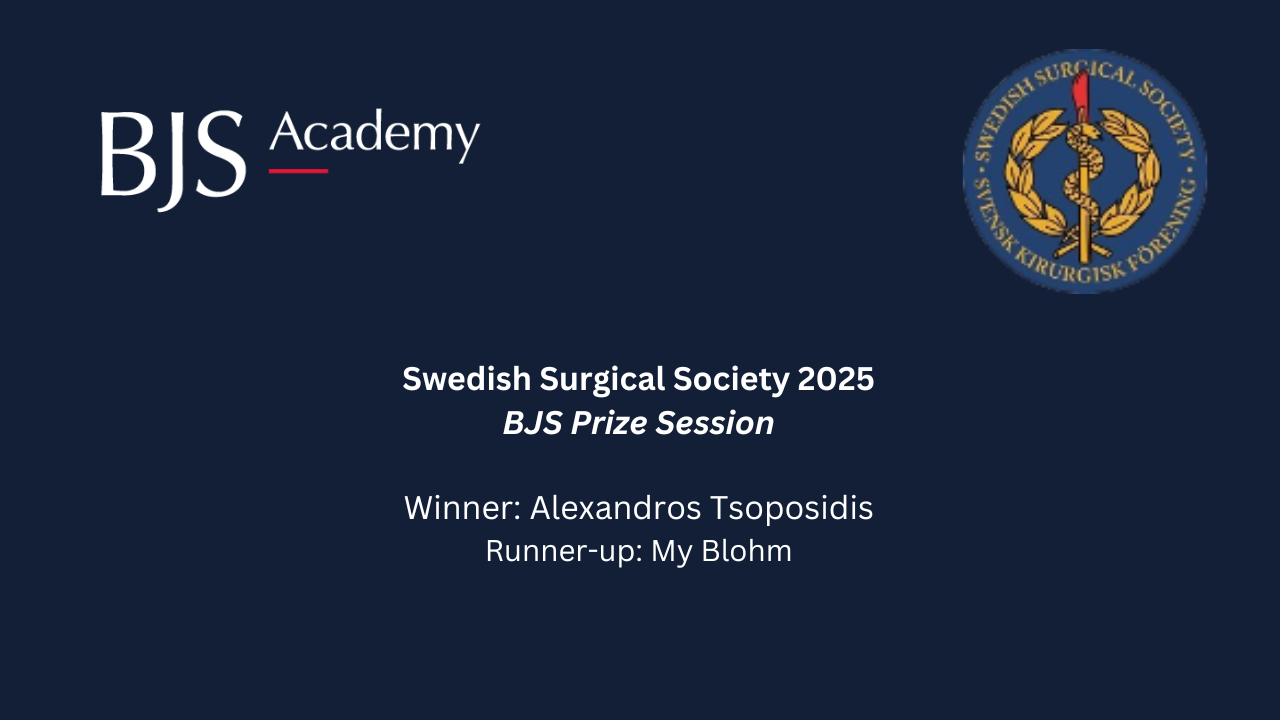
2025 Swedish Surgical Society BJS Prize Session
The BJS Academy are delighted to showcase the BJS Prize Session from the Kirurgveckan 2025/Swedish Surgical Week 2025 in Linköping 18-22 August 2025. The winner was Alexandros Tsoposidis and the runner-up was My Blohm.
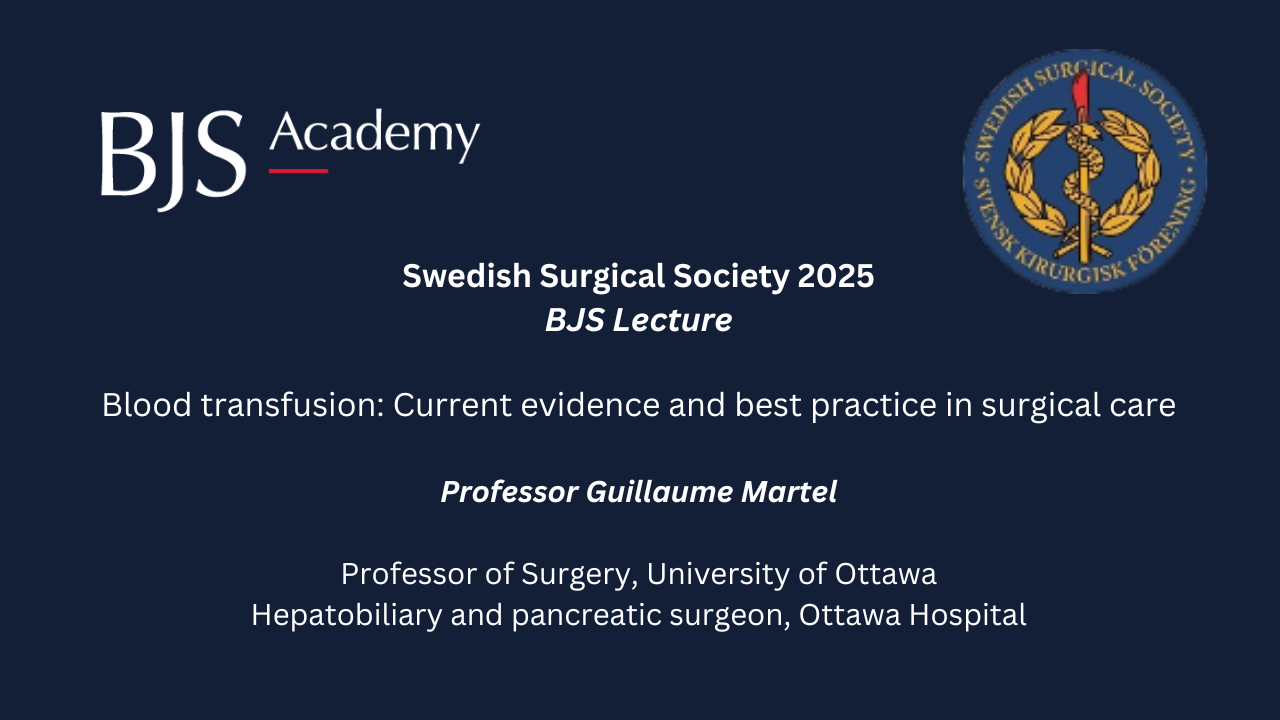
2025 Swedish Surgical Society BJS Lecture: Blood transfusion: Current evidence and best practice in surgical care
The BJS Academy are delighted to showcase the BJS Lecture, delivered by Professor Guillaume Martel, at Kirurgveckan 2025/Swedish Surgical Week 2025 in Linköping 18-22 August 2025.
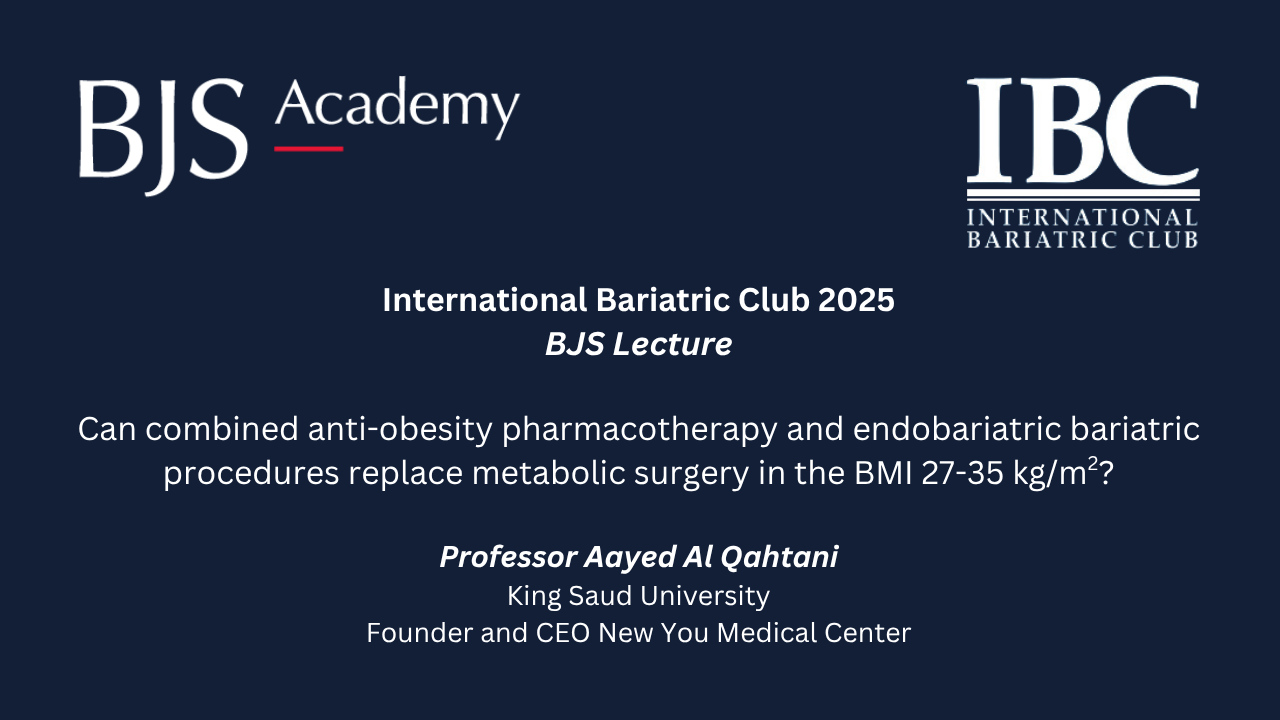
2025 IBC BJS Lecture: Can combined anti-obesity pharmacotherapy and endobariatric bariatric procedures replace metabolic surgery in the BMI 27-35 kg/m2?
Professor Aayed Al Qahtani presents his International Bariatric Club (IBC) BJS Lecture: "Can combined anti-obesity pharmacotherapy and endobariatric bariatric procedures replace metabolic surgery in the BMI 27-35 kg/m2?" from the Sixth International Bariatric Club University of Oxford World Congress held September 8-10, 2025.
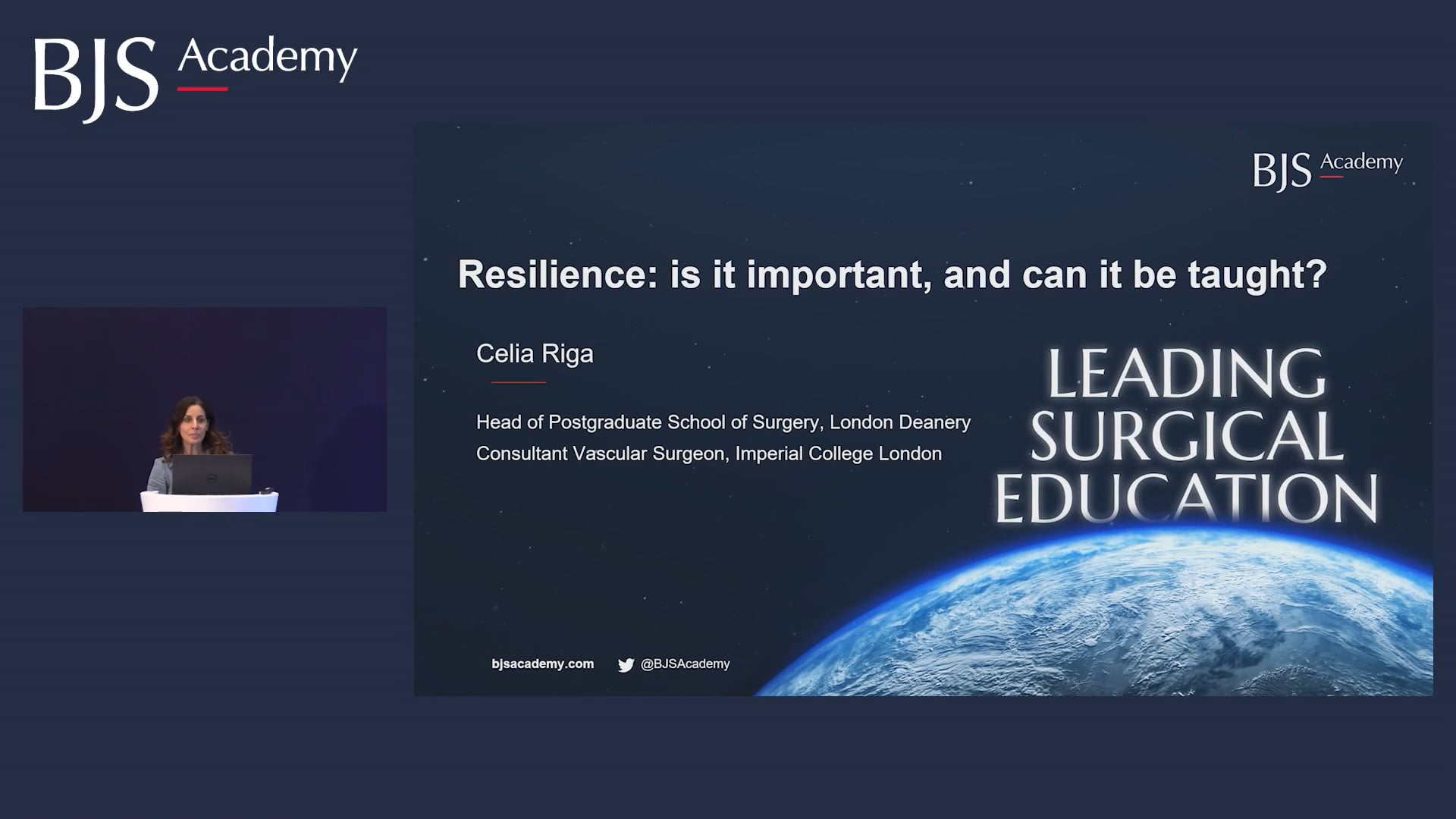
The makings of a modern surgeon: resilience - is it important, and can it be taught? (part 3 of 6)
Celia Riga presents part three of our series on ‘The makings of a modern surgeon,’ first presented at our BJS Academy Workshop in April 2025.

The makings of a modern surgeon: The importance of surgical research (part 2 of 6)
Sandip Nandhra presents part two of our series on ‘The makings of a modern surgeon,’ first presented at our BJS Academy Workshop in April 2025.

The makings of a modern surgeon: Longevity - planning a long career (part 1 of 6)
Derek Alderson kicks off our 6-part series on ‘The makings of a modern surgeon,’ first presented at our BJS Academy Workshop in April 2025.
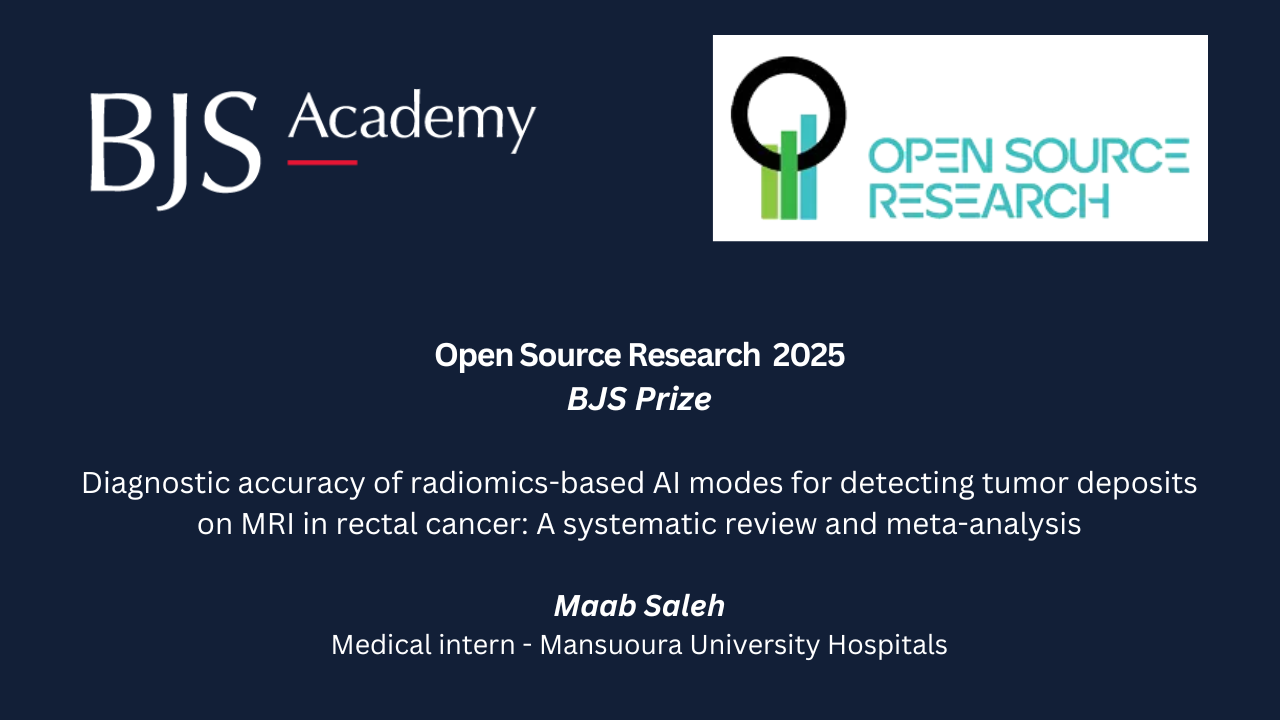
2025 OPSORE BJS Prize: Diagnostic accuracy of radiomics-based AI modes for detecting tumor deposits on MRI in rectal cancer
Maab Saleh presents her Open Source Research Organisation (OPSORE) BJS Prize winning paper: “Diagnostic accuracy of radiomics-based AI modes for detecting tumor deposits on MRI in rectal cancer: A systematic review and meta-analysis" from the 26th Annual Meeting of the Egyptian Society of Colon and Rectum Surgeons held 27th August to 29th August 2025 in Cairo, Egypt.

Pharmacogenomics in surgery
Rachel Palmer presents 'Pharmacogenomics in surgery'. Part 3 of our genomics series.

2025 OPSORE BJS Lecture: ERAS - Why it is more important in low- and middle-income settings
Khaled Madbouly presents his Open Source Research Organisation (OPSORE) BJS Lecture: "Enhanced Recovery After Surgery (ERAS): Why it is more important in low- and middle-income settings" from the 26th Annual Meeting of the Egyptian Society of Colon and Rectum Surgeons from 27th August to 29th August 2025 in Cairo, Egypt.

Cancer vaccines for surgeons: a primer
Rob Jones and Sarah Danson present 'Cancer vaccines for surgeons: a primer'. Part 2 of 3 in our genomics series.

2025 ESES BJS Prize: Effectiveness of preoperative oral supplementation of vitamin D (D-mac 30,000 IU) in preventing postoperative hypocalcaemia in patients undergoing total thyroidectomy: randomized clinical trial
Ra-Yeong Song presents her BJS Prize winning lecture "Effectiveness of preoperative oral supplementation of vitamin D (D-mac 30,000 IU) in preventing postoperative hypocalcaemia in patients undergoing total thyroidectomy: randomized clinical trial" from the 2025 European Society of Endocrine Surgeons 11th Biennial Congress.

An introduction to genomics
Frank McDermott provides an introduction to genomics. Part 1 of 3 in our genomics series.
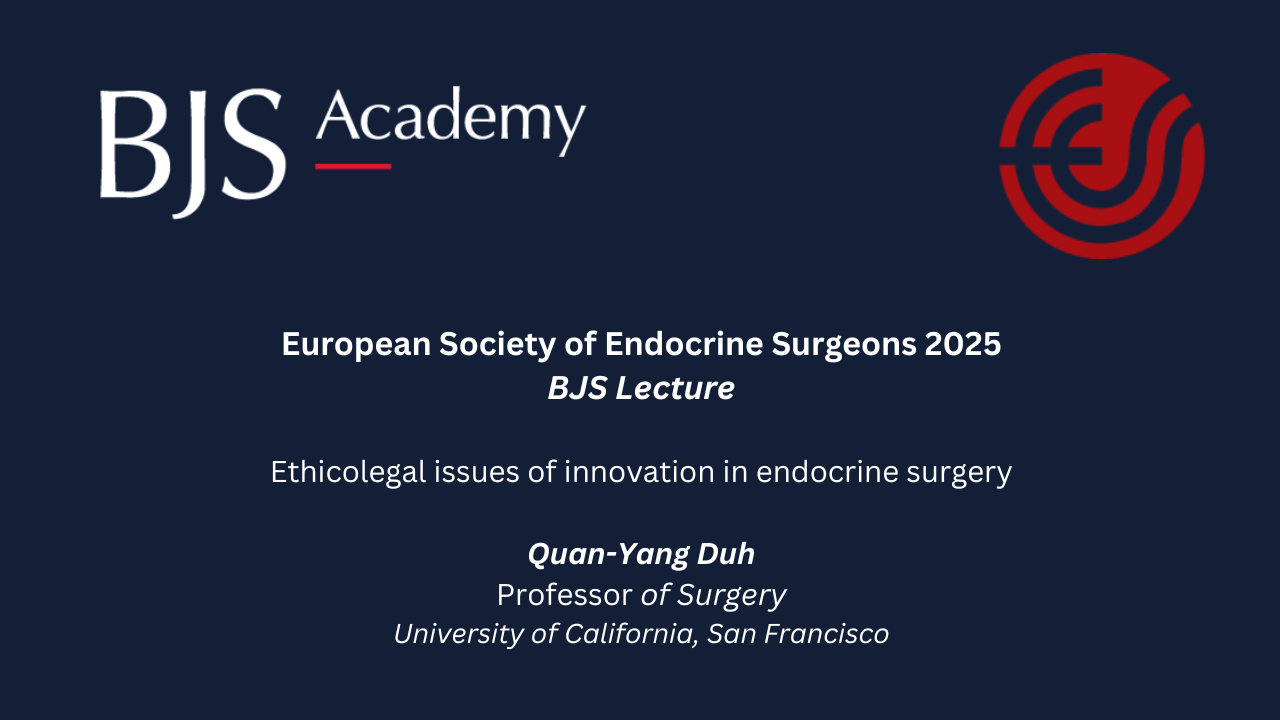
2025 ESES BJS Lecture: Ethicolegal issues of innovation in endocrine surgery
Quan-Yang Duh presents his BJS Lecture “Ethicolegal issues of innovation in endocrine surgery” from the 2025 European Society of Endocrine Surgeons 11th Biennial Congress.
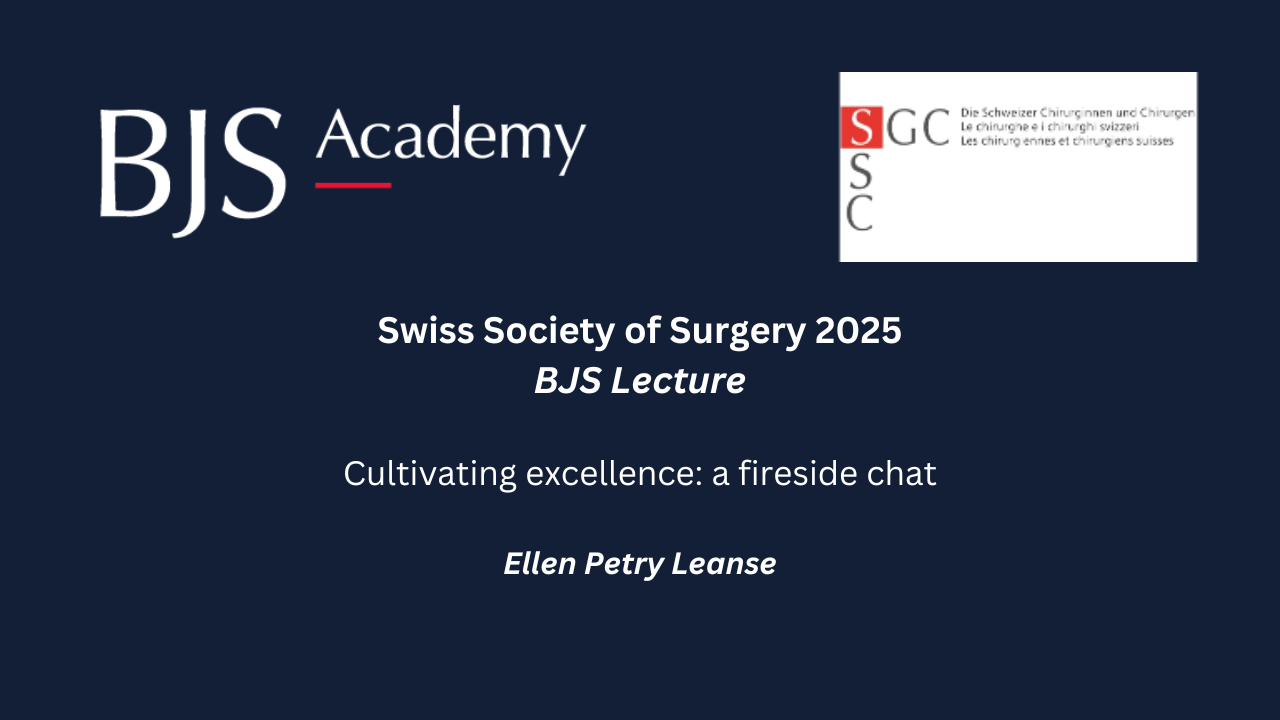
2025 Swiss Society of Surgery BJS Lecture: Cultivating excellence - a fireside chat
Ellen Petry Leanse in conversation with Dr Rebecca Kraus for the BJS Lecture "Cultivating excellence: a fireside chat" at the 2025 Swiss Society of Surgery's annual meeting.
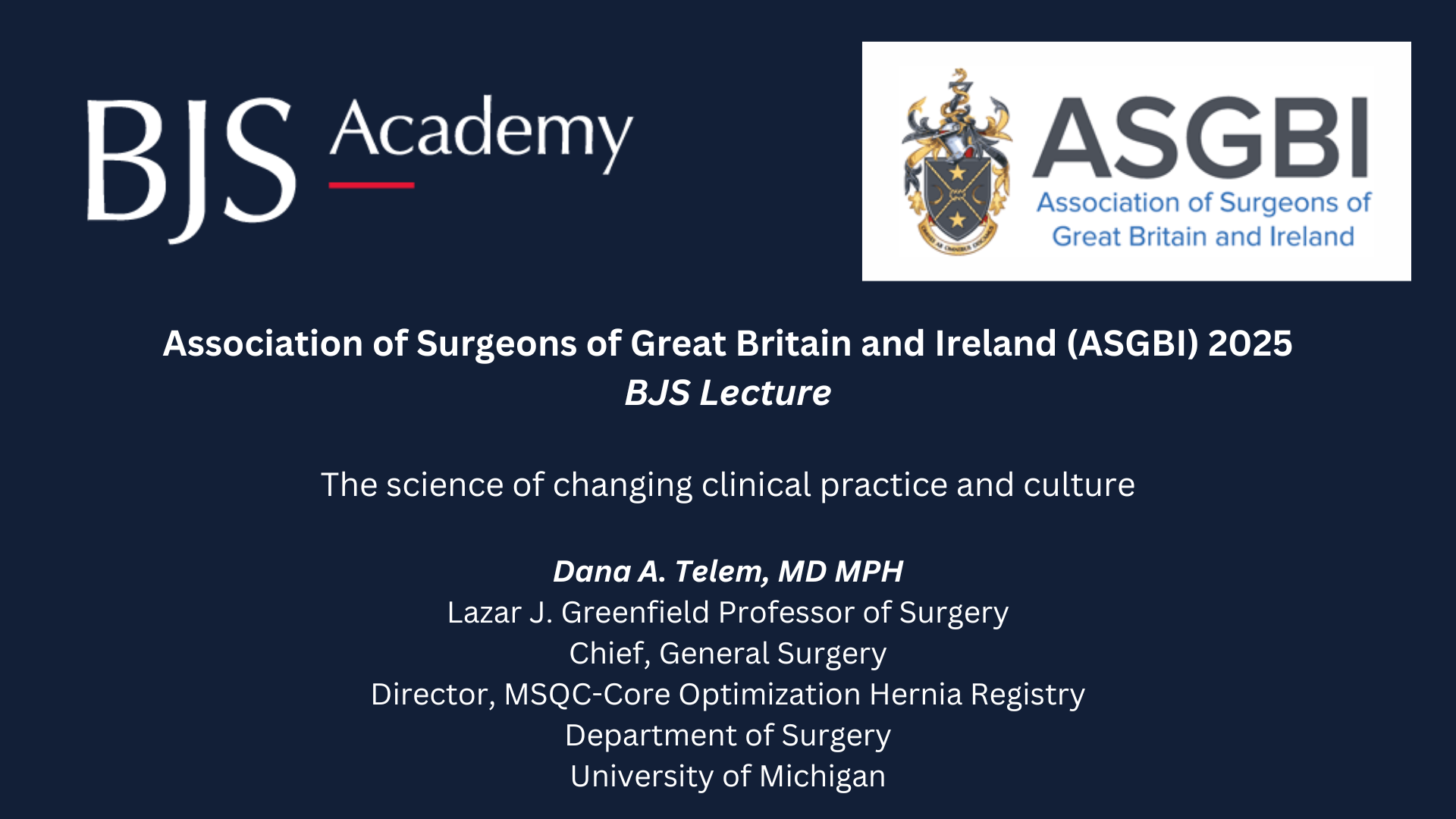
2025 ASGBI BJS Lecture: The science of changing clinical practice and culture
Dana Telem presents her BJS Lecture "The science of changing clinical practice and culture" from the 2025 Association of Surgeons of Great Britain and Ireland (ASGBI) International Surgical Congress.

Death of an admiral
Michael K. H. Crumplin, Honorary Curator Royal College of Surgeons of England, presents 'Death of an Admiral,' a lecture on the surgical aspects of life in the Royal Navy, naval surgery and medicine in the French Wars (1792-1815), and the death of Lord Nelson.

How to write and publish a clinical paper: AI summary
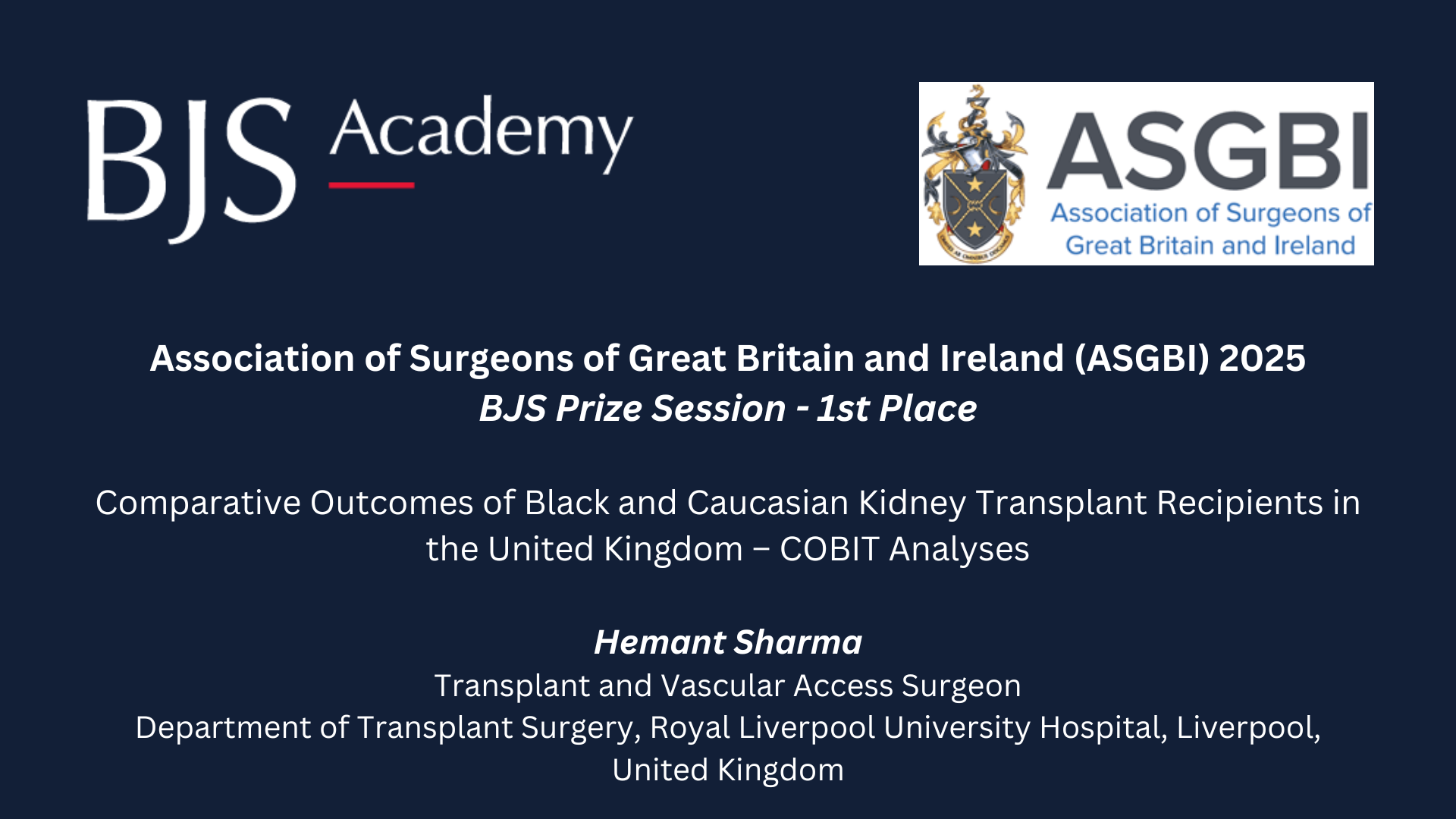
2025 ASGBI BJS Prize: Comparative Outcomes of Black and Caucasian Kidney Transplant Recipients in the UK – COBIT Analyses
Hemant Sharma presents his BJS Prize winning lecture “Comparative Outcomes of Black and Caucasian Kidney Transplant Recipients in the United Kingdom – COBIT Analyses” from the 2025 Association of Surgeons of Great Britain and Ireland (ASGBI) International Surgical Congress.
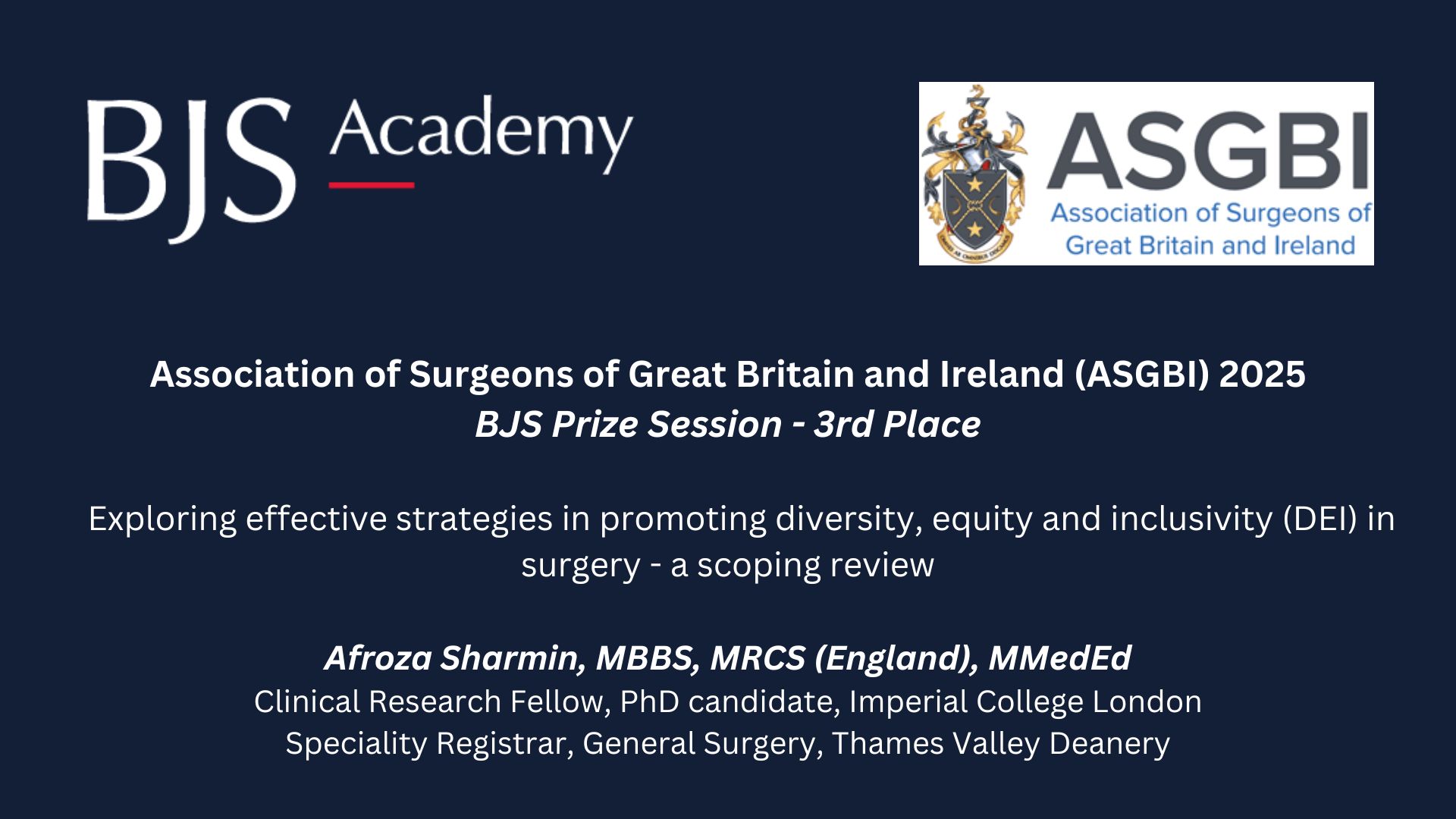
2025 ASGBI BJS Prize Session: Exploring effective strategies in promoting diversity, equity and inclusivity (DEI) in surgery - a scoping review
Afroza Sharmin presents her BJS Prize session lecture “Exploring effective strategies in promoting diversity, equity and inclusivity (DEI) in surgery - a scoping review” from the 2025 Association of Surgeons of Great Britain and Ireland (ASGBI) International Surgical Congress, which placed 3rd in the prize session.
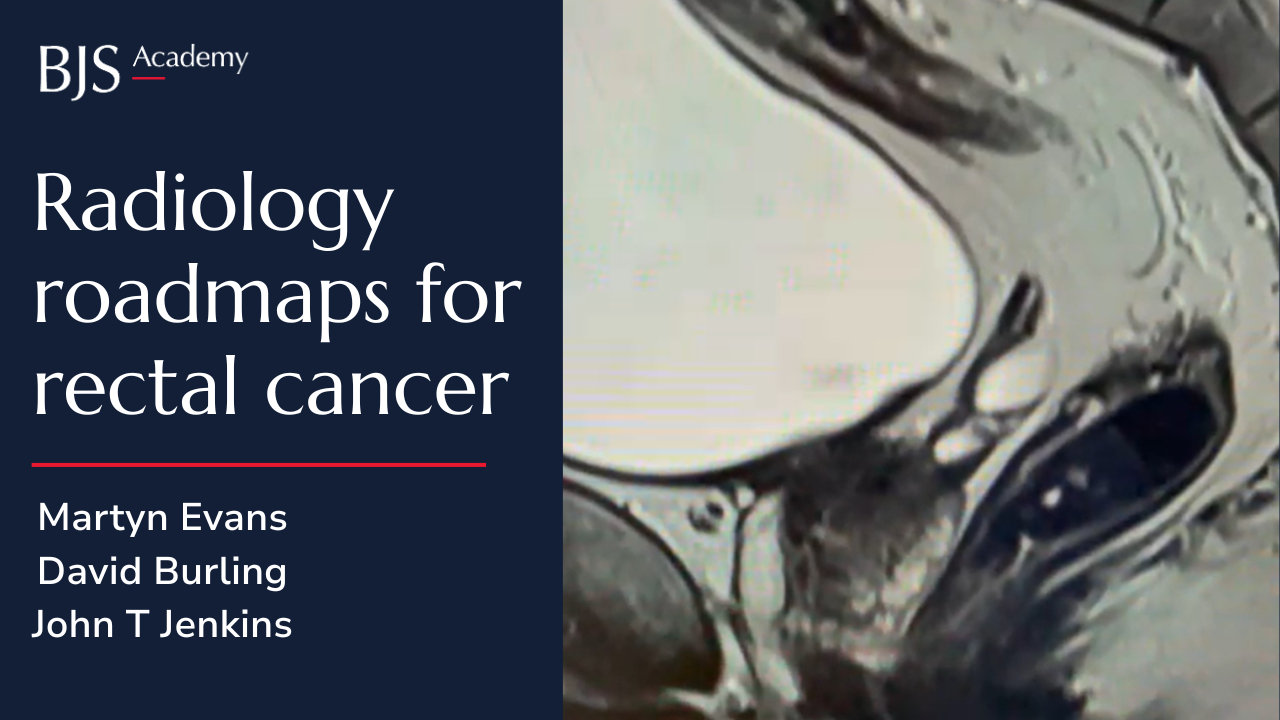
Radiology roadmaps for rectal cancer
Now, hear directly from two of the paper’s authors, David N Burling and John T Jenkins.
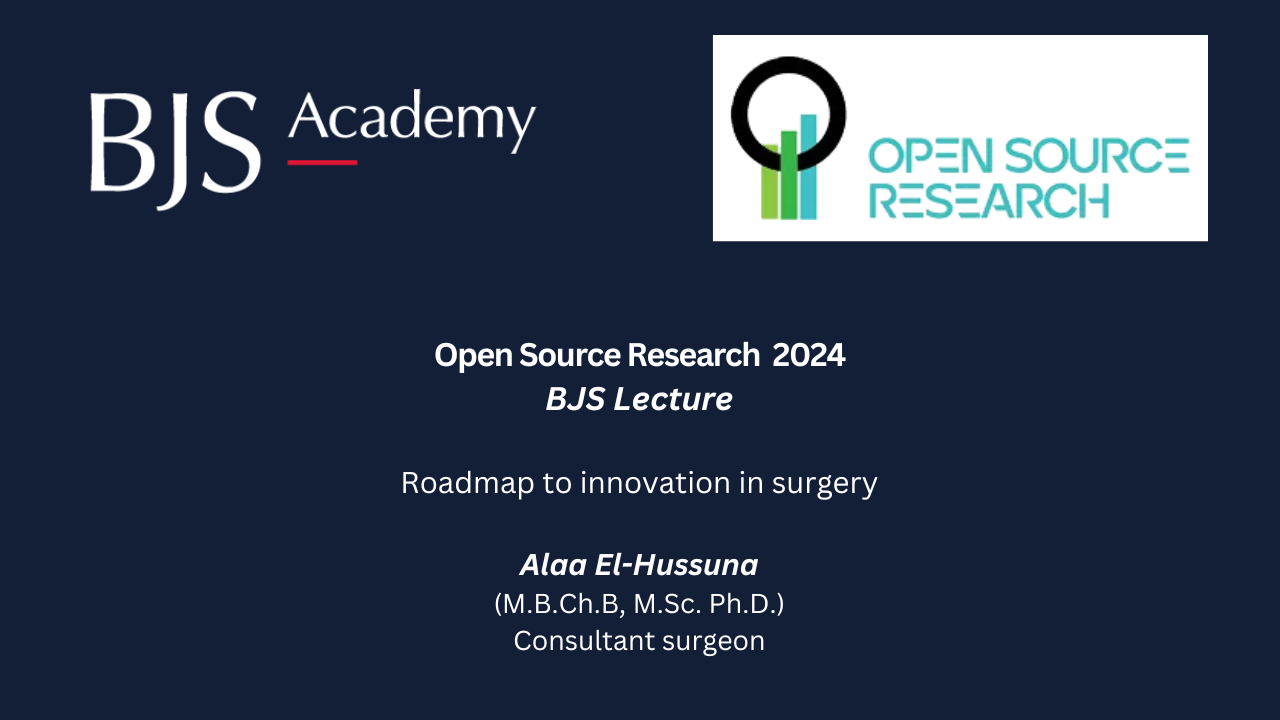
2024 OSRC BJS Lecture: Roadmap to innovation in surgery
Alaa El-Hussuna, MBChB, MSc, PhD, presents his BJS Lecture “Roadmap to innovation in surgery” from the 2nd Pan Arab Women Physicians Association Conference and the 1st Kuwaiti Women Physicians Conference held in Kuwait on December 12th and 14th, 2024 in partnership with OpenSourceResearch Collaboration (OSRC).

Enteric Fistula and Open Abdomen International Symposium (EFOA) 2025 Abstracts
Towards Better Patient Outcomes
28–29 August 2025 | Scandic Spectrum, Copenhagen, Denmark
The EFOA 2025 International Symposium will bring together specialists from across the world to address the complex challenges associated with enteric fistula and open abdomen cases. Held at the Scandic Spectrum in Copenhagen, the meeting will provide a platform for surgeons and multidisciplinary teams to exchange knowledge, share experiences, and explore emerging evidence and approaches.
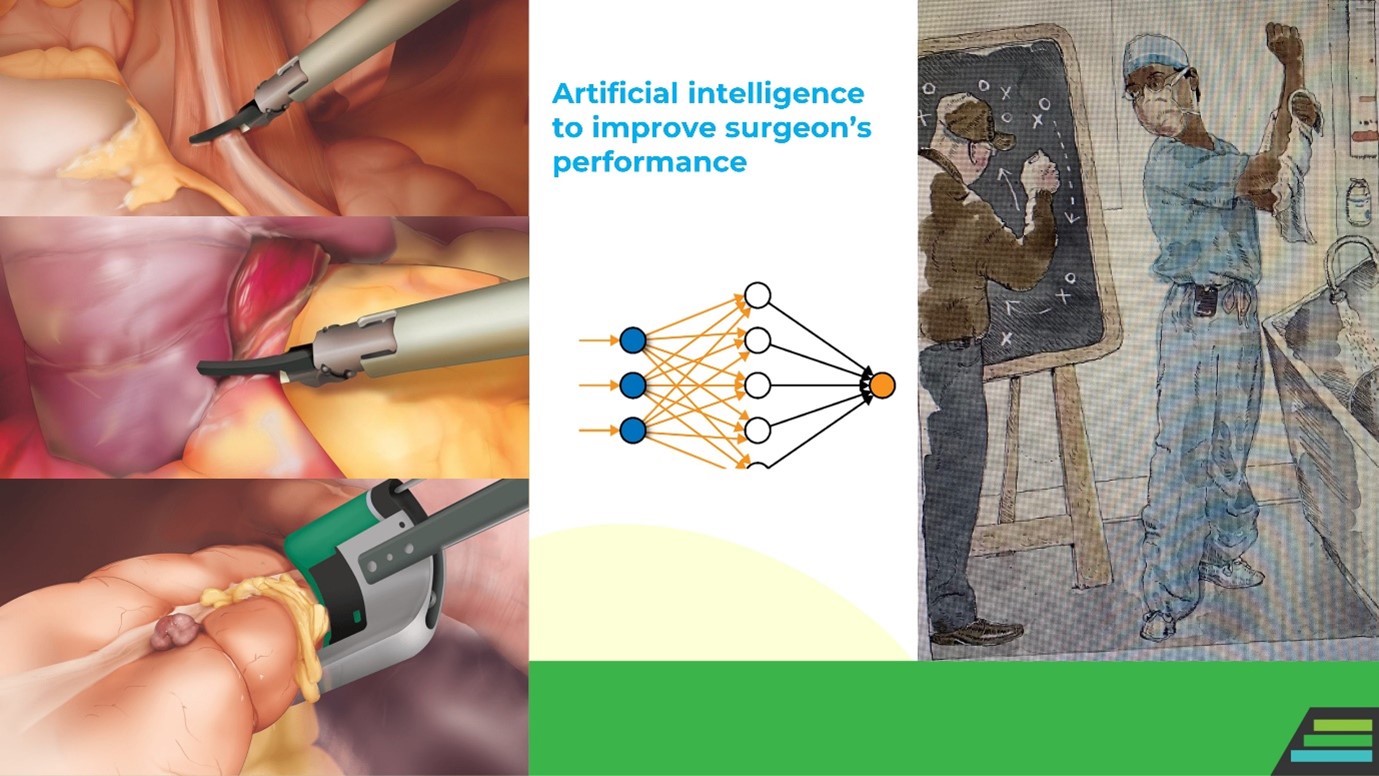
OSRC: developing novel tools for medical research
Alaa El-Hussuna (M.B.Ch.B, M.Sc.,Ph.D.)
The Open Source Research Collaboration (OSRC) is an international organization dedicated to advancing healthcare innovation through the integration of information technologies. Comprising a multidisciplinary team of clinicians, scientists, IT engineers, computer scientists, and students from these fields, OSRC focuses on developing and disseminating novel tools for medical research.
OSRC's mission is to promote innovation in healthcare by implementing information technologies. The organization emphasizes the use of publicly available information, such as databases, the internet, and social media, to conduct open-source research. Recognizing the limitations of traditional research methods in addressing current healthcare challenges, OSRC aims to explore and develop new tools for medical research through the application of information technologies.

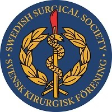






.jpg)
